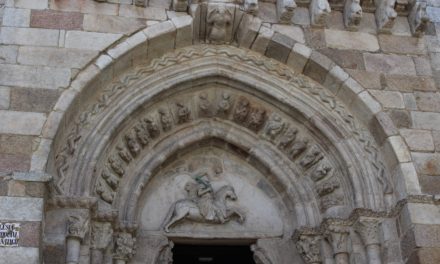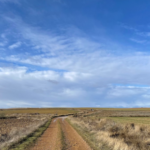From the two associations to which I belong and preside over, FICS (International Fraternity of the Camino de Santiago) and the Association of Friends of the Camino de Santiago de Astorga and Comarca, and we manage shelters and continue to receive calls from both pilgrims interested in walking, and hospitaliers who would like to work this summer. At the moment our answer is that the situation in the short and medium term is what the health authorities are dictating, but what these calls show is that the desire to regain the Camino is there.
This time is for reflection and work: to reflect on what has been lived on the Camino, what is happening and where it will go in the future, and at the same time work, to the best of our ability, to be prepared for the moment when the first pilgrim decides to walk towards Santiago. I believe from my point of view, that the Way of those pilgrims who used it to reflect, meditate, live an inner, religious experience … That Way is saved and those pilgrims will return.
The presence of pilgrims and the increase in their number is an aspect of the return to a normal situation, although I would like to underline that the success of the Camino is not measured in numbers. We will have to adapt to what the regulations say regarding the occupation of the shelters and work on the hypotheses of there being a fewer or greater number of pilgrims, since we can find that there are many pilgrims who decide to use the Camino to escape from all this situation that we are experiencing and we will have to be prepared to face the different possibilities. Actually, the Camino could be one of the first areas that re-emerge after the crisis and that situation must be planned.
Regarding these weeks of confinement, and the first months of de-escalation in which, it should be remembered, the number of pilgrims will not be much less than the figures of a normal year. Speaking about this, someone told me, and I agree with this reflection, that it is not the Camino which waits or stops waiting – it simply is, as it has been for centuries with its boom and bust times. A part of our work in this situation must be directed to maintaining the flame of hope in those who want to return or come to the Camino, because as long as this hope exists, the Camino will continue to live. This is one of the fundamental tasks on which we have to work – I mean, the associations, institutions and people linked to the Camino. That is to say, keep the pulse of the Camino, because if we manage to maintain the desire to do the Camino amongst people, the pilgrimage will be alive and will once again have pilgrims walking and enjoying the Jacobean experience.
For that first effort and from even the moment that there is only one pilgrim walking, as happened in the 80s and 90s, the associations and other institutions are going to have a lot of work to do, and we will be back to those who were in those early days. , exercising above all the traditional reception, because logically many shelters of those who live on the Camino will not open until the number of pilgrims makes them profitable. And our strength is that we are volunteers, and that is why we will be available to pilgrims from the beginning. When those few pilgrims start walking we will be available, just as every year we are in winter when many shelters close. We will facilitate and allow the return to the Camino, we will help to overcome the first reluctance and start working by what has always happened on the Camino, word of mouth, this time through the means that technology makes available to us. I think it will happen, little by little, because people’s hopes will far outweigh any initial reluctance.
Once again, the Traditional Welcome will show how essential its presence is for the Camino as it has been throughout the centuries. With the ‘enlargement’ gained in the pilgrimage in these recent years and its “numerical success of the Camino”, now its continued existence has been put into question. But the associations and the volunteers understand that the important thing is the pilgrims, without thinking about the numbers, so that a single pilgrim will be enough to open a hostel and make it available, although assuming that all the necessary safety and hygiene measures will have to be adopted to guarantee the well-being of pilgrims and hospitaliers.
The Camino exists and is a real source of hope for all of us in this situation through which we are living.
Juan Carlos Pérez Cabezas
President of the FICS (International Fraternity of the Camino de Santiago) and the Association of Friends of the Camino de Santiago of Astorga and its District.











